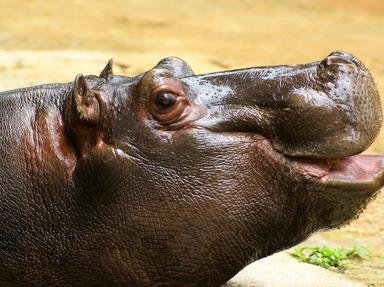Quiz Answer Key and Fun Facts
1. I'm a member of the family Hyaenidae, although I don't fall under the subcategory of bone-crushing hyenas, who sound rather scary in my opinion. In fact, I'm the only species of dog-like hyenas left alive today. What am I?
2. At first glance I may just look like a normal parrot. Although I'm a part of the same family, my wings are too small for my body and so I can't fly. Unfortunately this means that I have to live on the ground. But it could be worse, at least the standard of living in New Zealand is high... What am I?
3. Rather uniquely in the world of mammals, my defences consist of a hard covering of keratin scales. My name is derived from a Malay word that means 'something that rolls up', although I'm not an armadillo, they just want to be like me. What am I?
4. I have relatives all over the world. Some of my cousins can be found in cold underground stations in London, or around freezing rivers in Canada but personally I prefer a nice hot desert. I have very long hind legs and move around a bit like a kangaroo. What am I?
5. My diurnal primate pals are always poking fun at me because my eyes are the same size as my brain. Don't they know it's dark at night?! I have very long fingers and toes, in fact my name is derived from the elongated bones in my feet. What am I?
6. Did you know that there are over 200 species of owl in the world, most of which are nocturnal? Not to worry, you won't lose my face in the crowd with my distinctive 'eyebrows'. In case you still can't see me I'm the most widely distributed true owl in the Americas and my friends never let me forget that I'm also one of the biggest. What am I?
7. Although I may look like a ferret to you, I'm certainly not! I think you may need to adjust those night vision goggles. I'm widespread across both Central and South America and despite being a member of the order Carnivora I love nothing more than a tasty fig. What am I?
8. I'm an amphibian that can be found across South America, particularly around the Pantanal wetlands and the Amazon river. My curious name is a reference to the fact that I get a lot smaller when I metamorphosize from a tadpole. What am I?
9. Some of my closest relatives are the lemurs that can be found on the island of Madagascar, but I only live in Southeast Asia. I'm recognisable by my flattened occipital bone, but many humans prefer to recognise me by watching videos of me eating balls of rice. What am I?
10. I technically hold the title of being the largest land carnivore in South America, even if I mostly prefer to eat palm nuts and orchid bulbs. I can climb almost any tree you put in front of me, even some of the tallest in the Andes. I don't tend to accessorize as much as my name suggests. What am I?
Source: Author
pagea
This quiz was reviewed by FunTrivia editor
Tizzabelle before going online.
Any errors found in FunTrivia content are routinely corrected through our feedback system.
